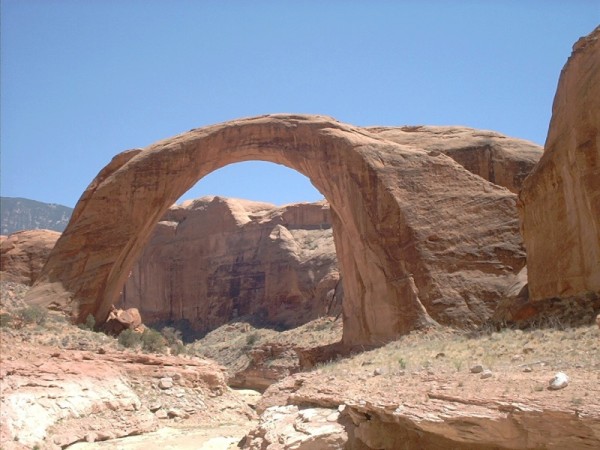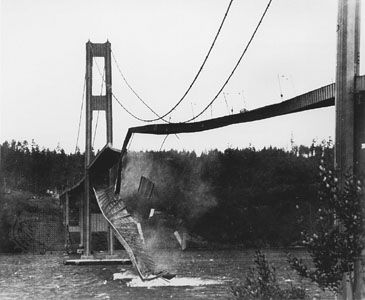
The Rainbow Bridge in southern Utah is a bridge of solid rock carved by water during the last ice age. At 290 feet tall it’s one of the highest natural bridges in the world and held sacred by Native Americans in the region. But it doesn’t stand still. Like all structures it moves in response to vibration.
Last year the University of Utah obtained permission to measure resonance at the Rainbow Bridge. Their report, published in Geophysical Research Letters, found that the bridge is affected by both natural and human activity. Wind can make it hum. Waves from man-made Lake Powell on the Colorado River, only a mile away, make it sway a little. During two days of measurements the bridge felt three earthquakes, one of which was a man-made earthquake in Oklahoma.
The report includes this animation of the Bridge’s movements. There are moments when it looks positively scary!

Read about how the Rainbow Bridge moves at Resonance in Rainbow Bridge: University of Utah study listens to the natural bridge vibrate and sing.
And speaking of scary bridge movements …
Man-made bridges are engineered to move just a little in response to wind and other forces, but they mustn’t move too much or they break. In a spectacular case of poor design the Tacoma Narrows Bridge, built to withstand 120 mph winds, collapsed on 7 Nov 1940 in a 40 mph wind only four months after it opened. The cause was attributed to resonance, though more recently to aeroelastic flutter.

Watch as the bridge collapses in the video below. Read the whole story here.
(Tacoma Narrows Bridge destruction, 7 Nov 1940, video embedded from Wikimedia Commons)
(credits are in the captions; click on the links to see the originals)
I’ve seen video of the Tacoma Narrows collapse many times, but that’s the longest and most complete video I’ve seen.
Wow, that video is like watching a slow motion earthquake. They always tell us it isn’t just the magnitude that matters, it’s how long the shaking lasts.
P.S. IMHO, for rock formations, there’s no place like Utah.